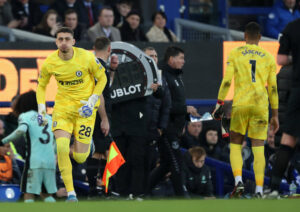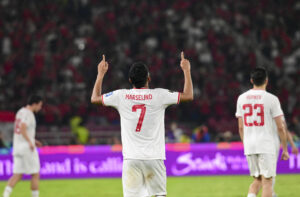On the 11th July, Liverpool confirmed the signing of Dominic Solanke upon contract expiry from Chelsea. Two days later, Watford confirmed the signing of Nathaniel Chalobah with one year left in his deal. Weeks previously, Solanke became a world champion with the England Under-20 squad and Chalobah was England’s best player at the Under-21 European Championship. Both were highly-touted academy prospects; both cited a need for first-team football as there reason for leaving.
Chelsea are at a youth development crossroads. They routinely develop some of the very best talent, but never make any use of it. The resources on offer at clubs like Chelsea and Manchester City allow them to have two of the best academies in the world. The flip side of this, however, is that they have the resources to sign the finished article whenever they want, which means that they rarely make use of their youth talent. Solanke and Chalobah are the first players to buck the system and take their development into their own hands. If something does not change, it is unlikely they will be the last.
Chelsea are at a Youth Development Crossroads
When it comes to youth development strategy, the club is beginning to change focus of late. Rather than many scattered loans, the club is progressing to two main development pathways.
The first is targeted, stylistic, repeated loans with heavy investment in the loaning club. This would be something like what Thomas Kalas or Matt Miazga experienced. Kalas will spend his second season at Craven Cottage this year. Security and comfort in his loan environment foster trust from the manager and a willingness to invest in their development. Why spend time on another team’s youth prospects if they are going to leave the next season?
Matt Miazga is similar. Physically dominant, the young American lacks in the mental and technical aspects of his game. After a loan to a more refined Eredivisie with Vitesse Arnhem, he has come on leaps and bounds. He has joined the Dutch outfit again this season, and a similar progression is on the cards. It is easy to scoff at him being another part of the Chelsea-Vitesse connection, but few players have made as much progress as he has.
“Sell-to-Buy”
The second development pathway is a “sell-to-buy” method that Barcelona and Real Madrid have employed so successfully. At a top club like Chelsea there are only so many spots for first team players. With repeated challenges on all fronts, it is very difficult to blood youth players without detriment.
The standard thought is to loan these players out where they are ready to contribute immediately. Instead, the players are sold. Rather than squeezing the most out of the fee, however, the clubs sell at a modest discount with a reasonable buy-back clause should the player kick on.
One of the best examples of this was Alvaro Morata. Sold to Juventus for €20m, a discount at the time, after years of excellent performances he was purchased by Real Madrid on a buy-back two years later for €30m. Dani Carvajal, also, was sold to Leverkusen for €5m, only to return to Madrid for just €6.5m the following summer.
The Tipping Point
Chelsea are diversifying their development strategy. Nathaniel Chalobah left for a nominal fee for an esteemed England Under-21 international, and notable Chelsea insider Simon Johnson claims that this is because there is a buyback clause in the deal. Nathan Ake and Bertrand Traore both left for lower than expected fees, reportedly due to buyback clauses and gentlemen’s agreements.
Conversely, Tammy Abraham, Izzy Brown, Kasey Palmer, and Ruben Loftus-Cheek all secured Premier League loans according to tradition. However, this summer and season appear to be a tipping point. For the first time in two decades there is no tangible link between the first team and the academy. John Terry was a crucial figure for academy hopefuls, but the obvious symbol of developmental success is gone.
German youth international Jann-Fiete Arp was quoted as saying “it doesn’t make any sense to join Chelsea as a 17-year-old”. The Hamburg player renewed his contract this summer over a move abroad after a prolific Under-21 European Championship. If promising young players begin to put their foot down ahead of moves to the Premier League champions, it represents a serious problem.
Chelsea might be the best academy in England, but it does not matter if those players never get a chance. It is hard to criticise when the first team has been so successful, but now, more than ever, Chelsea need a successful academy graduate.
Main Photo
Embed from Getty Images






